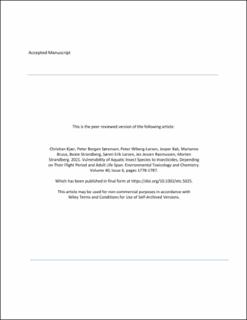| dc.description.abstract | Effects of insecticides on terrestrial adult life stages of otherwise aquatic insects, such as mayflies (Ephemeroptera), stoneflies (Plecoptera), and caddisflies (Trichoptera), are largely unknown. In the present study, a risk model was used to pinpoint the species most likely to experience effects due to spray drift exposure during the adult life stage. Using data from an earlier case study with lambda-cyhalothrin, 6 species with different life cycle traits were used to explore how life cycle characteristics may influence vulnerability. In addition, we performed a generic calculation of the potential effect on the terrestrial life stages of 53 species (including 47 species with unknown sensitivity). Our approach incorporated temporal and spatial distribution of both the insect and the insecticide, creating different exposure conditions among species due to variation in the relative proportion of the populations present at the time of insecticide spraying. The Ephemeroptera species represented were least vulnerable due to their extremely short adult life span and relatively short flight period. Based on their life cycle characteristics, Plecoptera and Trichoptera species were more vulnerable. These vulnerable species segregated into 2 distinct groups; one with a long adult life span to emergent period ratio and another with a high overlap between emergent period and spraying season. We therefore recommend that future ecotoxicological tests be done on species with these life cycle characteristics. | en_US |
